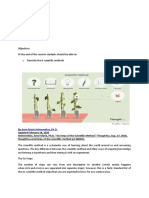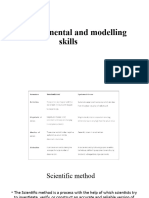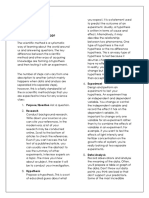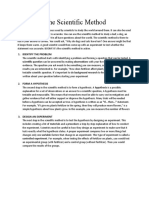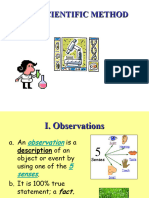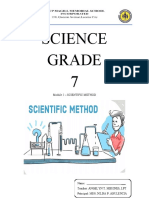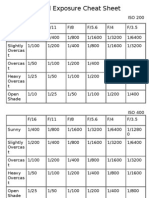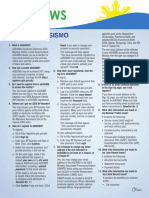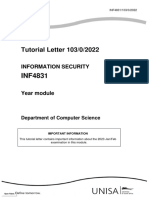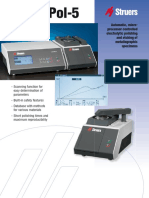Scientific method:
Introduction:
The scientific method is the process followed to answer questions about the world around
us. It consists of a series of steps that ensures that your investigation/experiment is fair, and
the results are reliable. It standardizes scientific investigations so that scientists can feel
confident that they will stick to the facts and limit the influence of personal bias.
The scientific method has 6 basic steps:
• Make an observation
• Ask a question
• Do background research
• Form a hypothesis
• Test the hypothesis
• Draw a conclusion
Hypothesis:
Hypothesis is a statement about what you think is going to happen. Ihe easiest way to write
a hypothesis is to state what you think will happen.
It should always:
• Explain what you expect to happen.
• Be clear and understandable.
• Be testable.
• Be measurable.
Contains the independent and dependent variable.
Example:
You saw your mom planting tomato seeds in the vegetable garden. You noticed that once
she finished covering all the seeds in soil, she sprayed them with water. After thinking about
it for a while you wonder if the amount of water your mom sprayed on the tomato seeds will
have an effect on their growth.
Therefore a hypothesis can be.
• Tomato seeds that get more water will grow taller. OR
• Tomato seeds that get less water will grow taller.
All of the above hypothesizes are correct as they are statements, both contain a variable and give a
predicted result.
�The AIM:
An aim is a statement about what the researcher wants to find out.
Always start your aim with: To…
It is normally written using some of the following phrases:
• To see…
• To investigate…
• To determine the relationship between…
Remember, it must always include the independent and dependent variables.
For example (we are using the same example):
You wonder if the amount of water your mum sprayed on the tomato seeds will have an
effect on their growth.
Therefore, an aim can be:
• To investigate if the amount of water given to tomato plant affect their growth.
• To see if the amount of water sprayed on tomato plants effect their growth.
Variables:
Introduction to variables:
Variables are factors/things that can vary and change.
In any experiment there are 3 variables:
• Independent (input)
• Dependent (output)
• Fixed (controlled) variables (factors that need to be kept the same)
Independent variable:
This is the thing/factor that you decide to change. It is the variable that is changed on
purpose by you the investigator. It is the factor that is going to affect the dependent
variable. To identify, ask yourself the following question:
“Which factor am I changing in this investigation?”
For example, if the hypothesis is:
The tomato seeds that get more water will be grown taller.
The independent variable is:
• The amount of water measured in ml.
This is because it is the factor that you were changing. You changed (increased) the amount of water
given to each tomato plant.
�Dependent variable:
This is the variable (factor) that is affected by the independent variable. This is the variable
that you as the investigator will observe and measure. To identify this variable ask
yourself:
” Which factor am I measuring as a result of what I changed in this investigation?”
For example, if the hypothesis is:
The tomato seeds that get more water will grow taller.
Therefore, the dependent variable is:
• The length of the tomato plant is measured in cm. OR
• Growth of the tomato plant (cm)’
This is because it is the factor you will measure because of how much water you gave the
plants.
Fixed variables:
There are variables that need to be controlled/kept the same in order to ensure that only
one independent variable will affect the dependent variable. This ensures a fair test. A
fair test is the term scientists use to describe an investigation in which there is only one
independent variable.
The best way to identify fixed variables is to ask yourself:
“What other factors, besides the independent variable, can affect the result?” Then control
those variables by keeping them the same.
For example, if the hypothesis is:
The tomato seeds that get more water will grow taller.
Ask yourself:
What other factor, besides the amount of water, can affect plant growth?
The control those variables by keeping them the same.
Therefore, the fixed variables will be:
• The amount of sunlight.
• Same amount of air.
• Same type of soil.
• Same amount of soil.
• Same sized pot.
Therefore, the only variable affecting the growth of the plant is the amount of water.
�Control groups:
Introduction:
The control or control group is a second investigation set up exactly the same as the
experiment for the independent variable being tested.
Why do we need a control group?
Because it is used as a standard of measurement to compare the result of the experiment to.
The control group is usually the norm (what you would expect to find naturally where you
have not manipulated the independent variables) and the experiment is usually the
apparatus in which you have manipulated the independent variables.
Remember the control group was set up in exactly the same way as the experimental group
except for the independent variable that was removed.
We can now compare the results of the experimental group to the control group and see if
the amount of water does affect the growth of the tomato plants.
Method:
Rules for writing a method:
• Write down the scientific method in numbered steps.
• The methods should be written in the past tense.
• The method must be clear and precise instructions including the apparatus, exact measurements
or quantities of chemical or substances.
• Ensure that your method is written out in the correct order.
• Give clear instructions how the results should be recorded.
• Include safety precautions where possible.
The method should be written so that a complete stranger will be able to carry out the same
procedure in the exact same way and get almost identical results.
�Drawing diagrams:
1. Heading
2. Draw with sharp pencil.
3. Use a ruler.
4. No 3d drawings – 2d only.
5. No sketchy lines or shading allowed, only stripling.
6. Label lines
7. Labels
Drawing of micrographs:
• Title should state what has been drawn and what lens power it was drawn under (example:
drawn as seen through 400X magnification)
• Title must be informative, centered and larger than other text.
• The title should always include the scientific name
• Draw what is seen, not what should be there.
• Do not draw everything that is seen in the field of view. Only what is asked for.
• Draw only as much as necessary for an understanding of the structure – a small section shown in
detail will often suffice.
• Include how many times larger the drawing is compared to life sized and a scale line that
indicated the relative size.
Tables:
Tables sort data for the purpose of analyzing it so that companions, relationships and graphs
can be drawn. Below is the criteria to correctly draw a table:
1. Heading
2. 1st column:
• It is always the independent variable.
• Must have the unit of measurement.
3. 2nd column:
• It is always the dependent variable.
• Must have the unit of measurement.
The independent variable must be in line with the correct dependent variable data.
�Graphs:
Introduction to graphs:
Graphs are used to visualize data from tables/data.
Graphs should have:
• Heading
• Both axes
• The x-axis as the independent variable.
• The y-axis as the dependent variable.
• Scale should be chosen according to the data given and be plotted in multiples, staring at zero.
• Always start with your y-axis multiple at 0.
Line graph:
Bar graph:
�Double bar graph:
Histogram:
Pie chart:
�Relationships:
A relationship between the variables can be drawn by observing the effect the independent
variable has on the dependent variable.
Conclusion:
A conclusion is a summary of what you found out. Always look at the results, graph or chart
to decide what you discovered and then state whether your hypothesis is correct or
incorrect. The easiest way to write up a conclusion is to answer the investigation
question in the past tense.
Reliability:
The idea behind reliability is that the results must be more than once-off and be repeatable.
Other researchers must be able to perform the same investigation, under the same
conditions and generate the same results.
To increase the reliability of an investigation, the following must apply, depending on the
nature of the investigation.
• Repeat the investigation.
• Take many readings and use averages.
• Randomly select a sample.
• Increase the sample size.
• Increase the period of the time investigation.
Validity:
Validity questions how the investigation was carried out. All the variables must be kept the
same except the independent variable.
To increase the validity of the investigation, variables that were not fixed or controlled
should be identified:
• Same amount of...
• Same time…
• Same apparatus…
Magnification, size and scale:
Cells are extremely small but knowing the size of objects viewed under the microscope is
very useful. For example, a plant scientist might want to compare the relative sized of
pollen grain from plants in the same genus to identify different species. With a
compound microscope, the magnification is the product of both lenses, so if the
microscope has a 10x eyepiece and an 40x objective, the total is 400x.
Magnification is defined as the ration of the size of the image to the size of the object.
�We use micrometers for specimens under the microscope. The conversion is 1mm = 1000uc
micrometers.
Magnification ratio:
The relationship between these three values can be showing the equation triangle to the
right, which offers a quick way to rearranging the values in order to derive related
formulas.
Therefore, we can use it to work out the formulas for the following:
Magnification = Image size / Actual size
Image size = Magnification * Actual size
Actual size = Image size / magnification
Depending the information given or found on a micrograph, we can work out either the:
• Magnification or the
• Actual size of the specimen.

























